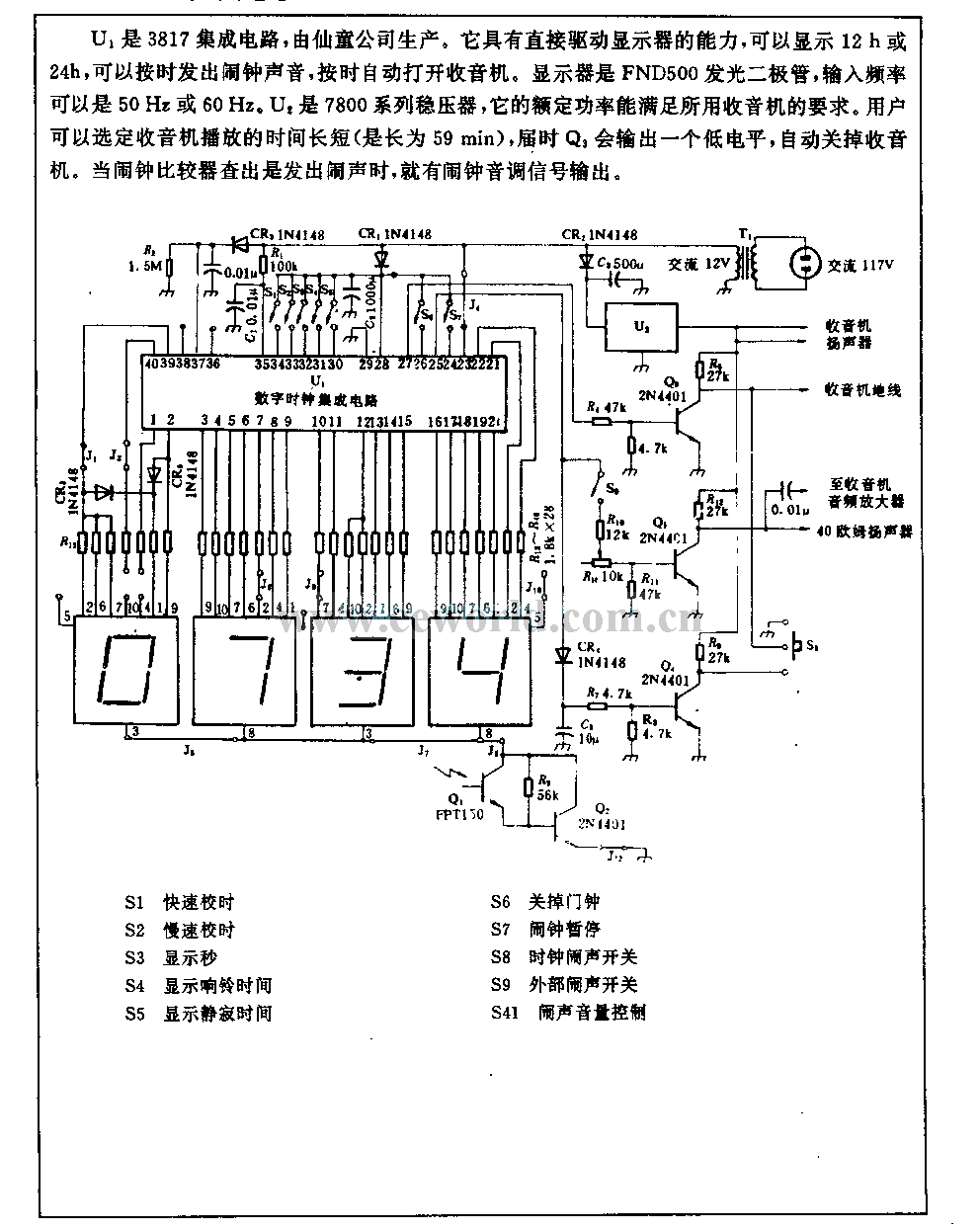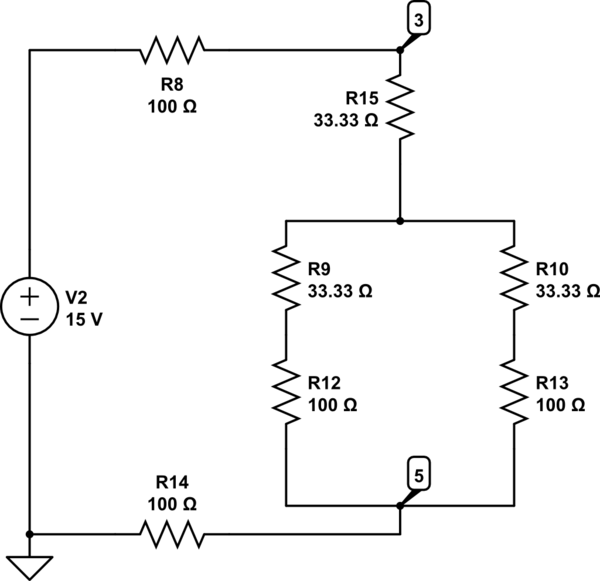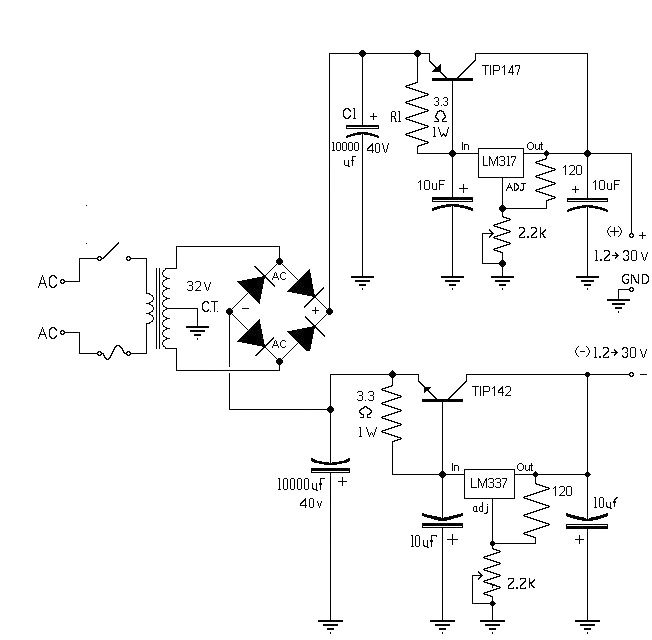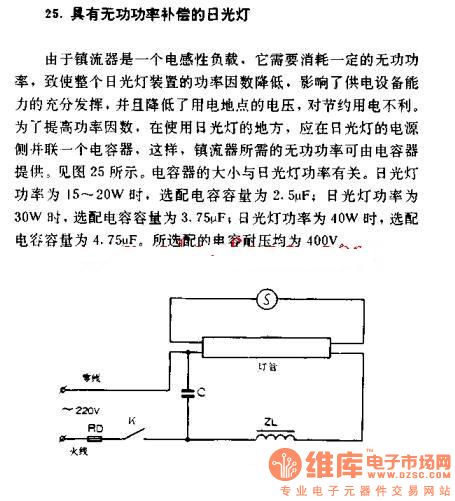
Gray Code Circuit
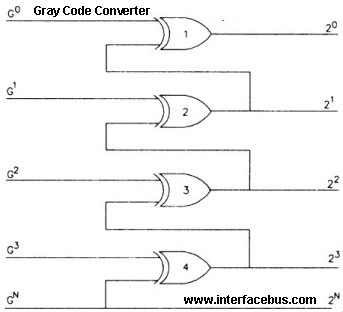
Gray Code is a positional binary number notation where any two numbers differing by one are represented by expressions that are identical except in one position, differing by only a single unit in that place. This code consists of a number of bits arranged so that only one bit changes at each increment or decrement. It is a binary code where consecutive decimal numbers are represented by binary expressions that differ in the state of only one bit. A circuit can be designed to convert Gray Code to Binary Coded Decimal (BCD) using standard glue logic integrated circuits (ICs). This circuit operates independently of the specific logic family used, provided that the families can communicate with each other. The schematic illustrates a 4-bit converter circuit, although additional XOR gates can be incorporated to create a converter for any number of bits. The 7486 Quadruple 2-Input Exclusive-OR Gate (74xx86) is suitable for implementing the Gray Code circuit. There are no dedicated Gray Code converter ICs available. Additionally, a Binary to Gray Code converter can also be constructed using the same 7486 XOR gates. In this case, instead of connecting the input of the XOR gate to the output of the lower gate, it should be connected to the input line. For instance, XOR gate 3 should have an input tied to the G3 line instead of the output line of XOR gate 4. This document also presents an Excess-3 Gray Code to Decimal Converter, which can refer to the BCD to Decimal Converter or decoder. The circuit can be assembled using the specified chips or with an integrated circuit that encompasses the entire circuit.
The Gray Code conversion circuit typically consists of a series of XOR gates that facilitate the transformation from Gray Code to Binary Coded Decimal. The fundamental principle of operation is based on the fact that each bit in the output binary representation is determined by the current and previous bits of the Gray Code input. The first bit of the binary output is directly derived from the first bit of the Gray Code input. Each subsequent bit is generated by applying the XOR operation between the corresponding Gray Code bit and the preceding binary output bit.
For a 4-bit Gray Code to BCD converter, the first XOR gate takes the most significant bit (MSB) of the Gray Code as its output. The second XOR gate combines the second Gray Code bit with the output of the first XOR gate, and this pattern continues for the remaining bits. This systematic approach ensures that only one bit changes at a time, adhering to the Gray Code principle.
To enhance the circuit's versatility, additional XOR gates can be added to accommodate larger bit-width Gray Codes. The 7486 IC, which contains four independent 2-input XOR gates, is ideal for this application. It allows for efficient implementation without the need for complex wiring or additional components, maintaining compactness and reliability.
The circuit can be further expanded to include a BCD to Decimal converter, which interprets the BCD output into a decimal format. This can be achieved using standard logic ICs or a dedicated IC that integrates the necessary logic functions. The design flexibility ensures that the circuit can be adapted for various applications, including digital displays or data processing systems, where Gray Code is utilized for error reduction in digital communication.Gray Code. A positional binary number notation in which any two numbers whose difference is one is represented by expressions that are the same except in one place and differ by only one unit in that place. A code composed of a number of bits assigned in such a way that only one bit changes at each increment, or decrement.
A binary code in which consecutive decimal numbers are represented by binary expressions that differ in the state of one, and only one, one bit. Circuit to convert Gray Code to Binary coded decimal [BCD]. Using standard glue logic ICs; note the circuit works regardless of the particular logic family used, as long as those families will communicate with each other. Manufacturers of Standard Logic The schematic shows a 4-bit converter circuit, but more XOR gates may be added to produce a converter of any number of bits.
A 7486 Quadruple 2-Input Exclusive-OR Gate [74xx86] could be used to implement the Gray code circuit above. There are no Gray code specific converter ICs. A Binary to Gray Code converter can also be made using the same 7486 XOR gates. Instead of feeding the input of the XOR gate from the output of the lower one use its input line. For example XOR-3 has an input tied to output line 2sup3 of XOR-4, tie that input line to Gsup3 instead.
So XOR gate 3 would have an input G2 and G3. This next page shows a Excess-3 Gray Code to Decimal Converter, also refer to the BCD to Decimal Converter or decoder. The circuit can either be made with the chips shown or with the IC that contains the circuit. 🔗 External reference
The Gray Code conversion circuit typically consists of a series of XOR gates that facilitate the transformation from Gray Code to Binary Coded Decimal. The fundamental principle of operation is based on the fact that each bit in the output binary representation is determined by the current and previous bits of the Gray Code input. The first bit of the binary output is directly derived from the first bit of the Gray Code input. Each subsequent bit is generated by applying the XOR operation between the corresponding Gray Code bit and the preceding binary output bit.
For a 4-bit Gray Code to BCD converter, the first XOR gate takes the most significant bit (MSB) of the Gray Code as its output. The second XOR gate combines the second Gray Code bit with the output of the first XOR gate, and this pattern continues for the remaining bits. This systematic approach ensures that only one bit changes at a time, adhering to the Gray Code principle.
To enhance the circuit's versatility, additional XOR gates can be added to accommodate larger bit-width Gray Codes. The 7486 IC, which contains four independent 2-input XOR gates, is ideal for this application. It allows for efficient implementation without the need for complex wiring or additional components, maintaining compactness and reliability.
The circuit can be further expanded to include a BCD to Decimal converter, which interprets the BCD output into a decimal format. This can be achieved using standard logic ICs or a dedicated IC that integrates the necessary logic functions. The design flexibility ensures that the circuit can be adapted for various applications, including digital displays or data processing systems, where Gray Code is utilized for error reduction in digital communication.Gray Code. A positional binary number notation in which any two numbers whose difference is one is represented by expressions that are the same except in one place and differ by only one unit in that place. A code composed of a number of bits assigned in such a way that only one bit changes at each increment, or decrement.
A binary code in which consecutive decimal numbers are represented by binary expressions that differ in the state of one, and only one, one bit. Circuit to convert Gray Code to Binary coded decimal [BCD]. Using standard glue logic ICs; note the circuit works regardless of the particular logic family used, as long as those families will communicate with each other. Manufacturers of Standard Logic The schematic shows a 4-bit converter circuit, but more XOR gates may be added to produce a converter of any number of bits.
A 7486 Quadruple 2-Input Exclusive-OR Gate [74xx86] could be used to implement the Gray code circuit above. There are no Gray code specific converter ICs. A Binary to Gray Code converter can also be made using the same 7486 XOR gates. Instead of feeding the input of the XOR gate from the output of the lower one use its input line. For example XOR-3 has an input tied to output line 2sup3 of XOR-4, tie that input line to Gsup3 instead.
So XOR gate 3 would have an input G2 and G3. This next page shows a Excess-3 Gray Code to Decimal Converter, also refer to the BCD to Decimal Converter or decoder. The circuit can either be made with the chips shown or with the IC that contains the circuit. 🔗 External reference


